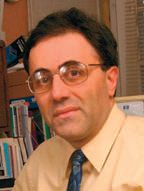Water-based nuclear battery
Dr. Neil Canter, Contributing Editor | TLT Tech Beat December 2014
Revolutionary new technology potentially could improve power generation and increase durability.
KEY CONCEPTS
•
Since the 1950s, conventional nuclear batteries have been investigated although they’re not very efficient.
•
A water-based nuclear battery has been developed that might greatly improve power generation and durability.
•
The novel water-based nuclear battery facilitates the transfer of energy from the radioactive isotope into the semiconductor.
IN THE ONGOING EFFORT TO DEVELOP BATTERIES WITH HIGHER EFFICIENCIES AND LONGER OPERATING TIME FRAMES, much research has focused on upgrading lithium-ion types because they have the potential to deliver higher energy density than the currently available alternatives.
One of the problems with using lithium-ion batteries has been concerns about safety problems during use, which can lead to thermal runaway resulting in smoke and fires. A previous TLT article provided a potential solution to the safety issue (
1). The approach devised was to use a wax emulsion as a gummy electrolyte where the liquid component facilitated ion migration, while the solid-wax particles melt to form a non-conductive layer on electrodes if the temperature is high enough to block ion flow and in effect shut down the battery.
Another source of power that has been used in batteries is radiation. Solar and nuclear batteries use radiation for electric power generation. The production of electricity from a nuclear battery is conducted in a similar manner to a solar cell. The only difference is that the source is not the sun but, rather, high-energy particles formed from the decay of a radioactive isotope.
Jae Kwon (
see Figure 2), associate professor of electrical and computer engineering and nuclear engineering at the University of Missouri in Columbia, Mo., says, “The nuclear battery has been researched for a long time as it was developed in the 1950s. Radiation from a radioisotope is converted to electricity through the collision of high-energy species such as beta particles with a semiconductor. When sufficient electron-hole pairs are produced from these collisions, electrical current is generated.”
 Figure 2. Jae Kwon’s team has produced a novel water-based nuclear battery that has the potential to be a revolutionary technology greatly improving power generation and durability. (Courtesy of the University of Missouri)
Figure 2. Jae Kwon’s team has produced a novel water-based nuclear battery that has the potential to be a revolutionary technology greatly improving power generation and durability. (Courtesy of the University of Missouri)
Although the power output of a nuclear battery depends on the type of radioactive isotope used, extensive energy losses can always be seen within a conventional nuclear battery.
Kwon says, “Some types of isotopes are better than others because they can sustain a high radiation output over time. Losses within a conventional nuclear battery can be substantial, with less than 1 percent of the radiation converted into useful energy.”
Another problem is solid materials used to construct a nuclear battery can create problems. Kwon says, “High-energy radiation produced within the battery can damage the lattice structures of semiconductors.”
Kwon has previously proven a liquid- phase semiconductor offered better performance features. Now the liquid of choice is water used in a completely different way to generate power.
Kwon says, “Using an aqueous system is attractive because water is well known as a medium for radioactive systems in applications such as nuclear power plants. Water is very effective at absorbing the kinetic energy of beta particles.”
Preparation of a water-based nuclear battery may provide a revolutionary technology that will lead to improved power generation and increased durability. Such a battery has now been developed.
 ‘We are confident that we will be able to boost the efficiency of this battery to a very high level. Lead-acid batteries used in automobiles have an efficiency of 90 percent.’
‘We are confident that we will be able to boost the efficiency of this battery to a very high level. Lead-acid batteries used in automobiles have an efficiency of 90 percent.’
www.canstockphoto.com
SURFACE PLASMONS
Kwon’s team has produced and evaluated a water-based nuclear battery. The radioactive source is the isotope, strontium-90, and the semiconductor was prepared by coating platinum on a nanostructured titanium dioxide electrode.
As high-energy beta radiation produced by the isotope moves to the platinum coating, surface plasmons are created that enhance the movement of electrons into the titanium dioxide electrode and the formation of holes at the platinum/water interface.
Water molecules also play a role in enhancing the impact of the surface plasmons. Kwon says, “Water is electrochemically active, and we found that beta particles or high-energy electrons will interact with water molecules to form radicals that can increase the transfer of energy through surface plasmons.”
The result is that efficiency for this current device is 50 percent, according to Kwon. He says, “We are confident that we will be able to boost the efficiency of this battery to a very high level. Lead-acid batteries used in automobiles have an efficiency of 90 percent. We believe we will be able to reach this level as well with the water-based nuclear battery in the future.”
From a safety standpoint, Kwon sees no problem. He says, “Water absorbs all of the radiation, and any radicals that leak should disappear very quickly. The water-based nuclear battery is not super toxic, and leaks can be avoided by using proper packaging.”
Kwon will be trying to improve the efficiency of the water-based nuclear battery and scale it up to a commercial level in the future. He says, “Most nuclear batteries generate low levels of power in the subnanowatts to microwatts level. We are targeting a much larger system requiring high power as we scale up this technology.”
Additional information can be found in a recent article (
2) or by contacting Kwon at
kwonj@missouri.edu.
REFERENCES
1.
Canter, N. (2012), “Safer lithium-ion batteries,” TLT,
70 (5), pp. 10-11.
2.
Kim, B. and Kwon, J. (2014), “Plasmon-assisted radiolytic energy conversion in aqueous solutions,”
Scientific Reports,
4:5249 DOI:10.1038/srep05249.
 Neil Canter heads his own consulting company, Chemical Solutions, in Willow Grove, Pa. Ideas for Tech Beat items can be sent to him at neilcanter@comcast.net
Neil Canter heads his own consulting company, Chemical Solutions, in Willow Grove, Pa. Ideas for Tech Beat items can be sent to him at neilcanter@comcast.net.